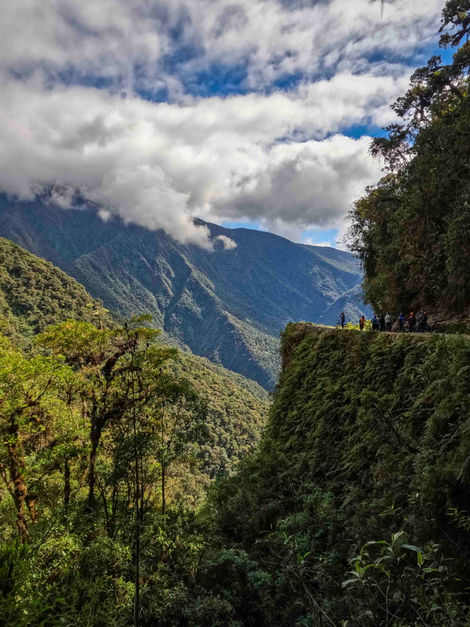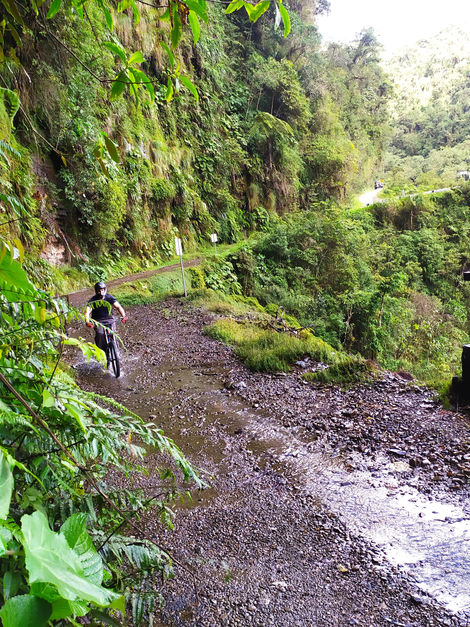Create Your First Project
Start adding your projects to your portfolio. Click on "Manage Projects" to get started
La Paz & Huayna Potosi
We used our week in La Paz to recover from a bout of illness, catch up on work and just chill out. La Paz is a huge sprawling city, nestled into a valley surrounded by huge, snow covered peaks. It seems forever hazy, its streets a chaotic mess and everywhere you walk, it just seems to go up and up and up. Nonetheless there is a certain charm to this grimy, oxygen-deprived place, especially when observing it from the heights of its pride and joy, the amazing cable car system, connecting all the far flung corners of this city.
Walking through the cementary on a Sunday proved to be a cultural highlight. The graves are stacked on top of each other in huge, skyscraper-like buildings. The locals visit their loved ones on the weekends to refresh the displays of flowers and favourite items in life of their deceased (such as coke bottles, alcohol, toys etc). Artists decorate the walls with indigenous cultural murals in a contest every year.
The bustling market of El Alto (a town just above La Paz and the biggest indiginous community in Bolivia) was a perfect place to people watch. Cholitas in their best outfits, carrying colorful wraps containing various goods or their babies, some of the cutest kids we have ever seen, the Yatiris ("witch doctors") performing rituals with mumified llama babies hanging over their heads and much more.
Another highlight was the Cholita Wrestling. This tradition came to life in the fight against domestic violence with the local Aymara women wanting to show that they can stand up for themselves and hold their own against men. Now mainly a spectacle for the tourists, the cholitas, dressed in colourful traditional outfits, fly through the air, throw each other across the ring and even choke each other with their hair braids in a staged, but fun filled show of athleticism.
As a daytrip from La Paz, we mountain biked down the infamous "Death Road". Once the most dangerous road in the world, claiming many lives, it has nowadays been replaced by a new and safer road. The death road still exists but is now only used to access a few villages along the way and for tourists to bike down. It is still a nerve wracking and adrenalin inducing thing to speed down the loose gravel road with the cliffs going down hundreds of meters right next to you and riding past many memorials and crosses commemorating the many accidents here in the past. Thankfully we all made it down in one piece.
After our week relaxing in La Paz, we decided to takle our next big challenge. Summiting Huayna Potosi, just outside of La Paz. Huayna Potosi is known around the world as the "easiest 6000er" to climb. Easy only in the sense that not much technical skill is required. Physically though, we quickly found out, it is still extremely challenging.
On the first day you get driven up to basecamp at 4700m, then you hike up to a glacier where you practise walking with crampons on ice and ice-climbing using an ice axe. On day 2 you hike up to the high-camp at 5200m where you spend the day resting and acclimatizing. Then, on day 3, you get woken up at 1am and you beging the grueling 1000m ascent to the summit at 6088m.
Due to the altitude, you are forced to go at an absolute snails pace, climbing through snow and ice, your heart hammering in your chest, battling with the feeling of oxygen deprivation. I cried on several occasions, convinced I could not go on. Somehow, after about 7h of climbing, we made it to the summit just after sunrise. After about 10min on top to take some photos, we made our way back down again. At the bottom, a huge wave of relief washes over you. Feeling beyond exhausted, incredulous and proud that you just did that and swearing to yourself you would never, ever do anything like this ever again. Upon arrival in La Paz, we immediately collapsed into bed and slept for about 13h straight.
With this as a worthy end to our time in Bolivia, we are off to our next destination: Peru!







































































































